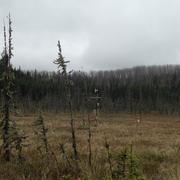
Water fluxes and system evolution of mine pit lakes
Fully funded MSc and PhD students are being sought to work on research on End-Pit Lakes in the Athabasca Oil Sands Region. All oil sands mine closure landscapes are designed to include pit lakes. Thus, designing and constructing self-sustaining pit lake ecosystems in an accelerated timeframe at the commercial scale is a critical component of oil sands mine reclamation and closure landscape designs. Coal and metal mines have historically reclaimed mine pits into functioning lake ecosystems, although with varying success. However, there is much less information regarding pit lake functioning in an oil sands setting, and more research is needed to evaluate system design features and performance. This information will inform future design optimizations and identify the critical issues and considerations for designing and constructing pit lakes at the commercial scale. Specific projects include: 1) Identify the dominant components of the water budget of the Upland Watershed and the DPL (individually and collectively) now, and evaluate how will this change in the next 5, 10, 20 and 50 years to help determine if the DPL is self- sustainable; 2) Determine the significant upland features that ensure adequate flow to the lake, and assess how these features and processes will evolve as vegetation develops and influences soil moisture dynamics; and 3) Establish the residence time of the pit lake, and how will this change when scaling up to commercial-scale, and what the implications will be for water quality.
Peatland Reclamation
Fully funded MSc and PhD positions are available in peatland reclamation work in the Athabasca Oil Sands Region. In Northern Alberta, where oil sands are extracted, open pit mining covers an area of ~895 km2, and peat dominated wetlands fed by groundwater, mostly fens, cover about half of this area. Industry is required to return the landscape to equivalent functionality. This means that functioning wetlands must be returned to the landscape as part of their landscape reclamation effort. An experimental fen system was constructed, along with the entire watershed that is required to generate groundwater flows that sustain an appropriate level wetness in the fen peatland. Specific projects include: 1) Examine soils and vegetation treatments on previously reclaimed sites to quantify partitioning of vertical fluxes of energy and water; 2) Incorporate spatial and temporal patterns and rates of water, nutrients and carbon stores and fluxes to, from, and within natural reference fens into a modelling framework to examine the trajectory of reclaimed systems under varying climatic scenarios; 3) Use a combination of modelling approaches (i.e. CRHM, GSFLOW-PRMS) to represent feedbacks in scaled-up system; determine optimum wetland:upland area in the reclaimed landscape and evaluate the resilience of natural systems in the Boreal Plains landscape; and 3) Examine vascular vegetation plots (differing communities, densities and structure) to understand how the ratio of transpiration:evaporation varies as a function of canopy and soil development.
Boreal Plains Ecohydrology
A fully funded PhD position is being recruited to examine the long-term success of ecosystems along an environmental gradient, which requires an understanding of the landscape-scale water balance and the respective hydrologic roles of these ecosystems. While there is considerable knowledge of natural analogue systems in the literature and from other programs, the vertical versus lateral partitioning of water in the sub-humid Boreal Plains requires careful consideration of all hydrological fluxes combined with a knowledge as to how these fluxes will change with ecosystem development and a variable climate. Considering that the greatest variability in water balance is precipitation (as both rain and snow) and evapotranspiration (based on age of the landscape, species type, stage of growth and moisture stress). This work will make use of an unprecedented network of 13 flux sites spanning peatlands and forests in the Boreal Plains to provide water balance information (P-E envelopes) for all representative landscape units in the region. Flux measurements of a range in site and climatic conditions will provide time-varying envelopes, which will allow an empirically-driven estimate of water available for recharge/runoff across the landscape.
Inquiries on any of these positions may be directed to:
Dr. Richard Petrone
Professor, Hydrometeorology Research Group
University of Waterloo
P: (519) 888 – 4567, 39174
Additional information can also be found at:
https://uwaterloo.ca/scholar/rpetrone
